Before coming to Cambodia, we had an image in mind of what Angkor Wat looked like. This is what we had in mind:

I knew that the temple was well known for being large and detailed, but I had no idea what sort of scale we would be dealing with. Indeed, Angkor Wat (Wat meaning temple), which is pictured above, is majestic. But, it is only one of many monuments worth visiting within the Angkor Archaeological Park. There are over a thousand temples in the park, which spans 150 square miles (including temple “suburbs” outside of the main square). Part of what makes the archaeological complex so amazing is the scale and variety of structures, which vary in size, building materials, color, detail, and style.
Reading about the Angkor complex before our visit, I found conflicting advice. Some people advised that a one day visit would be sufficient, after all once “you’ve seen one [temple], you’ve seen ’em all”. Others advised that three days would be required, at a minimum, and a week would be preferable. Reading this debate and reading the Wikipedia article on the Angkor Archaeological Park, I realized that the site was much bigger than I had imagined. Angkor Wat is perhaps the centerpiece of the Angkor Archeological Park, but there is much more there as well. We weren’t sure how many days we should spend in town and what sort of pass we should purchase for visiting the temples. You can buy a one day pass ($20), a three day pass ($40), or a seven day pass ($60). You are not allowed to trade or modify your pass once purchased. We just couldn’t make up our minds and we literally left the decision to be made at the very last second as we were getting in line to buy our pass. We decided on the three day pass, then immediately changed our minds and settled on the seven day pass. I am happy with our decision; there have been a few times throughout our trip that we have experienced the “you’ve seen one, you’ve seen ’em all” feeling, but this was definitely not one of them. As time rich and money poor travellers, it actually made more sense for us to take our time with the temples. Only paying $20 more than we would have paid for the three day pass, we were able to spread out the cost of the pass over the span of a week. Furthermore, lodging was quite affordable at $8 a night (including breakfast) and meals at the nearby restaurants ranged from $1-$2 per plate. Staying a week, we were able to take our time and experience the Angkor Archeological Park at our own pace, on our own schedule, and within our budget. We bought a cheap guide book and used it to read about the temples as we visited them. We took one tuk tuk tour to the temples which were further away and then biked around ourselves on the other days.
A bit of history
Angkor Wat is the largest religious monument in the world. It was constructed as the Khmer empire’s capitol city. Initially constructed to be Hindu places of worship, the temples were gradually transformed into Buddhist buildings. Construction of Ankgor began in the early 12th century, and the buildings there were continually worked on and added to until the 16th century. According to Wikipedia, Angkor was the largest pre-industrial city in the world, with an urban sprawl of at least 1,000 square kilometers (390 sq mi). To put that into scale, the second largest pre-industrial city, the Mayan Tikal, was only 60 square miles. The Angkor civilization began to decline in the 14th century, and by the 16th century, the city was abandoned and mostly forgotten (though locals continued to know of its existence). The complex was not popularized in the west until the mid 19th century when European archaeologists began to study it. Since then, there has been ongoing restoration that still continues today. One can see signs around the complex displaying the names of different countries which are sponsoring the restoration of individual structures. The temple complex is known for its skillful architecture and design as well as its extensive decoration, including intricate bas-relief friezes.
Common themes and highlights of our tour:
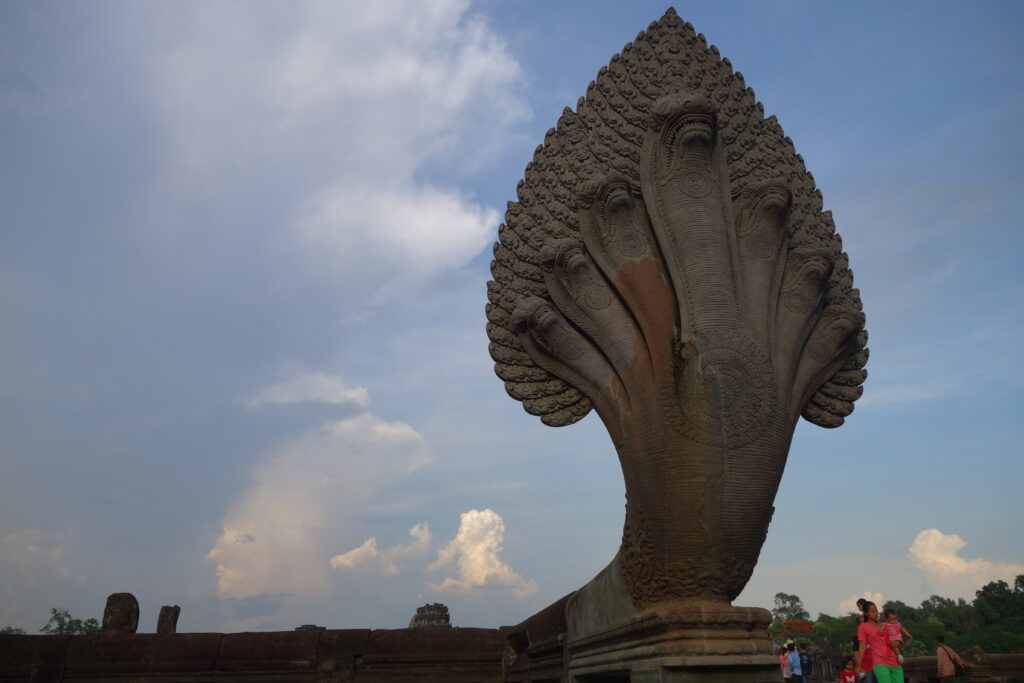
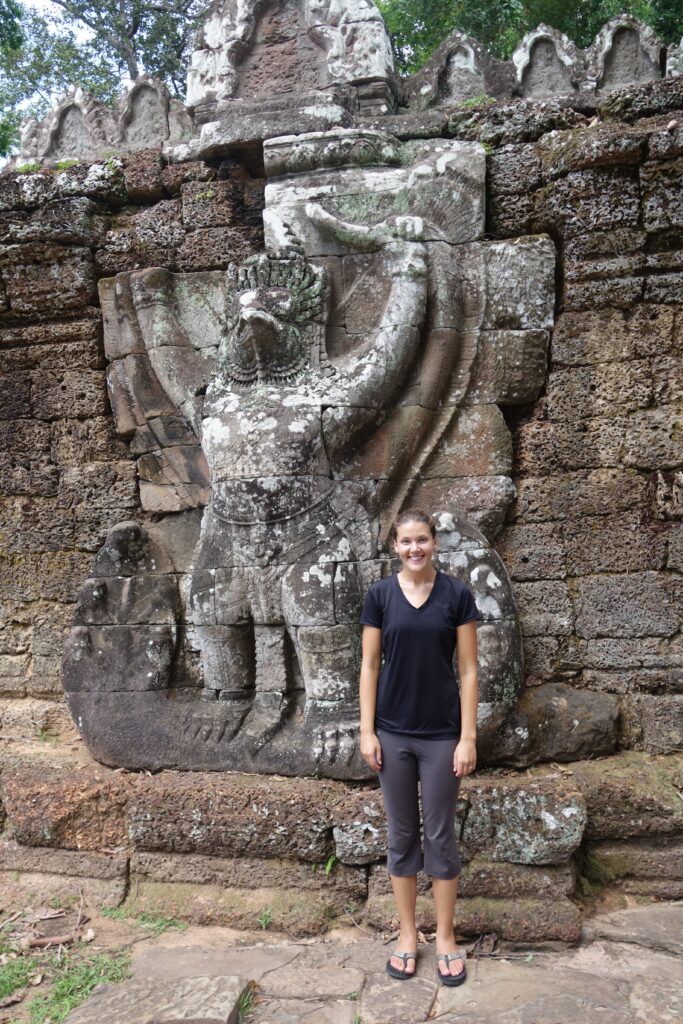

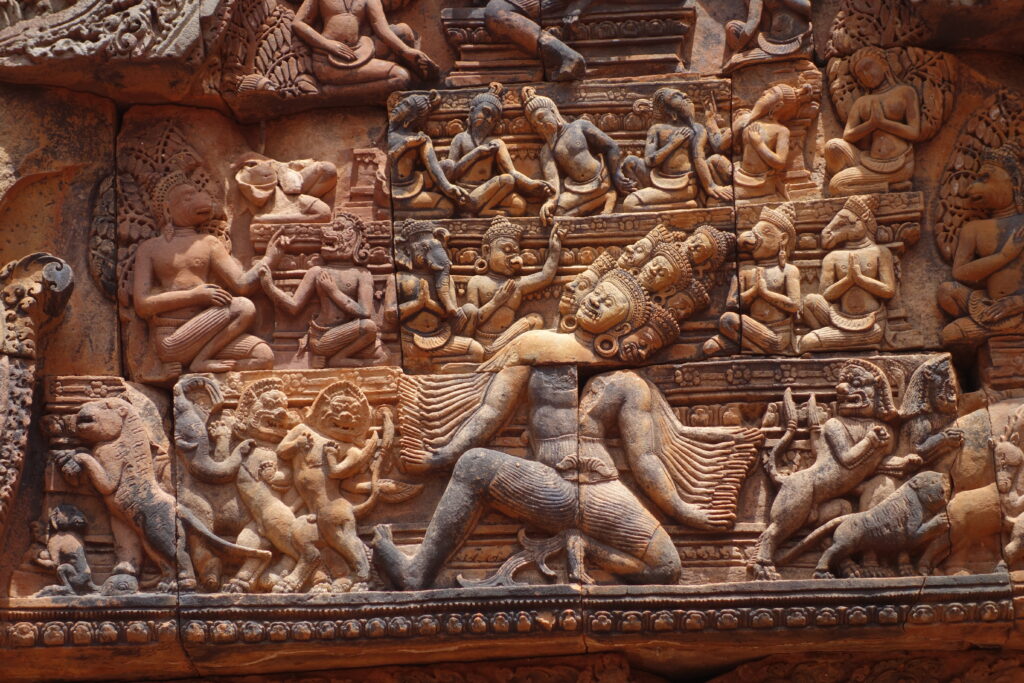
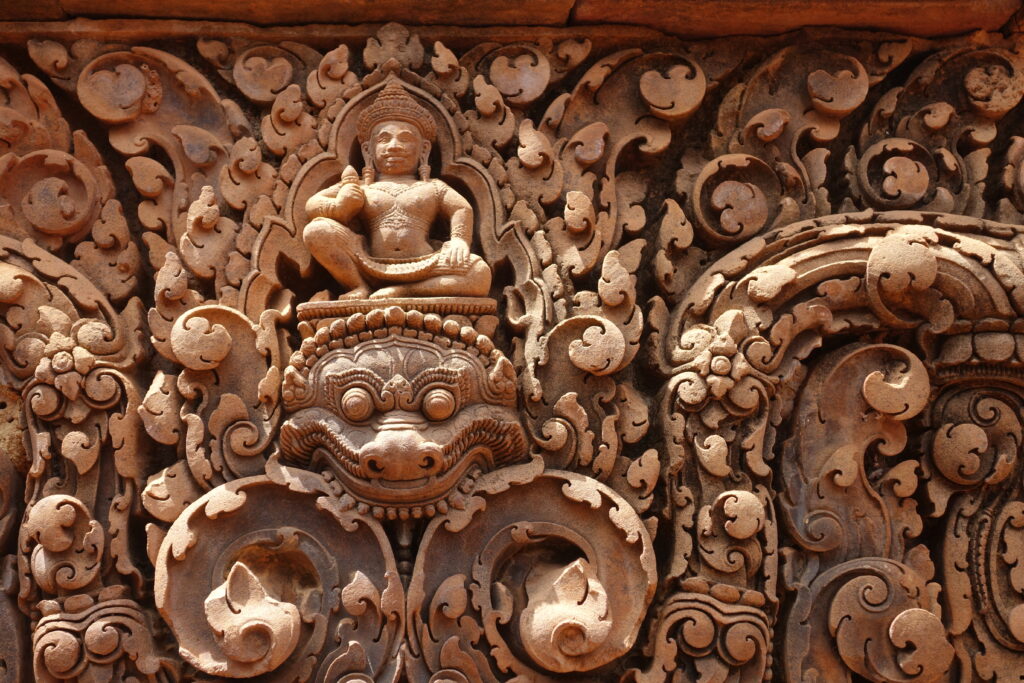

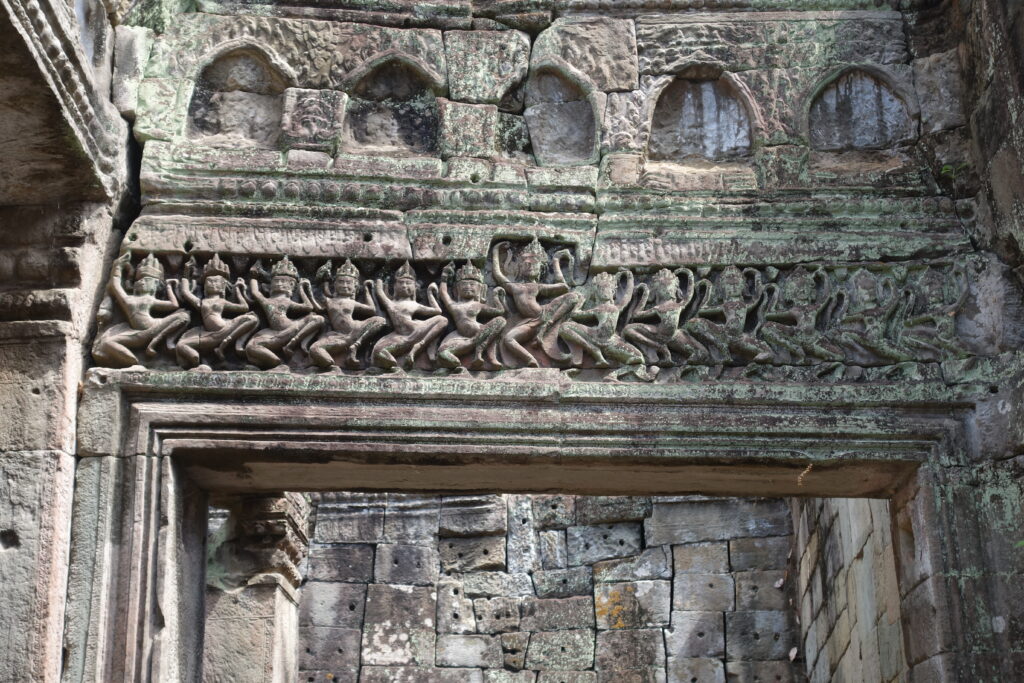

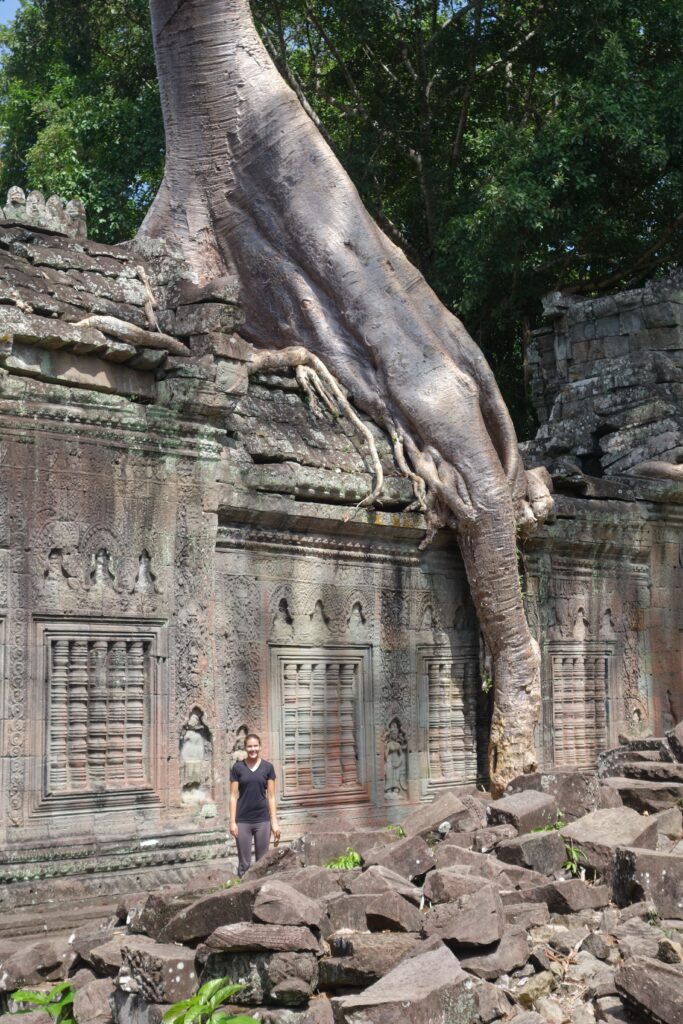



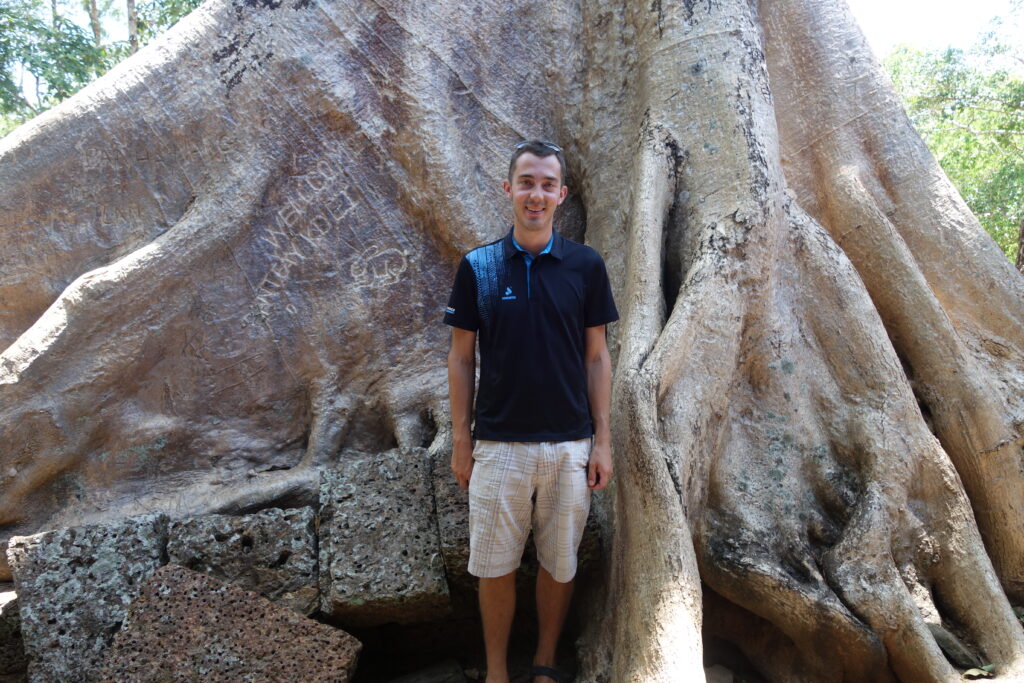
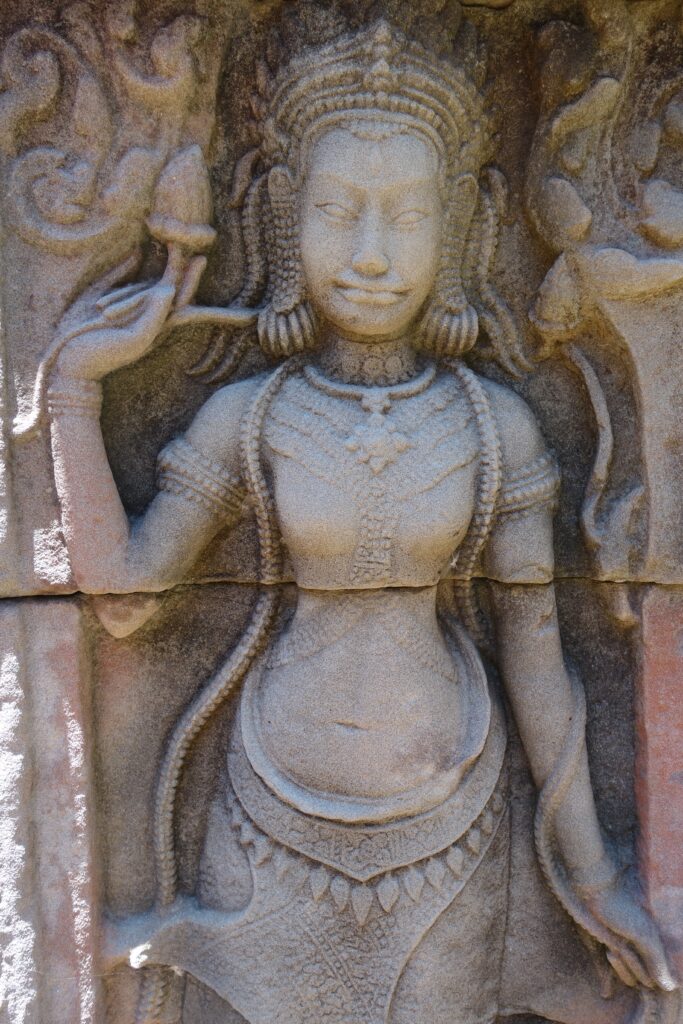

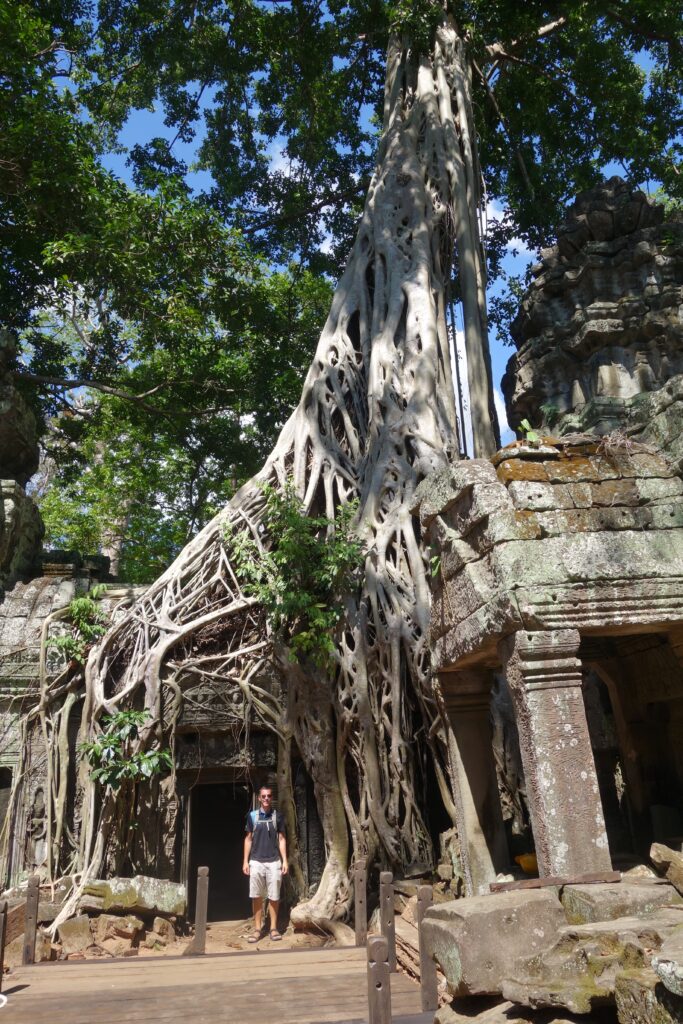


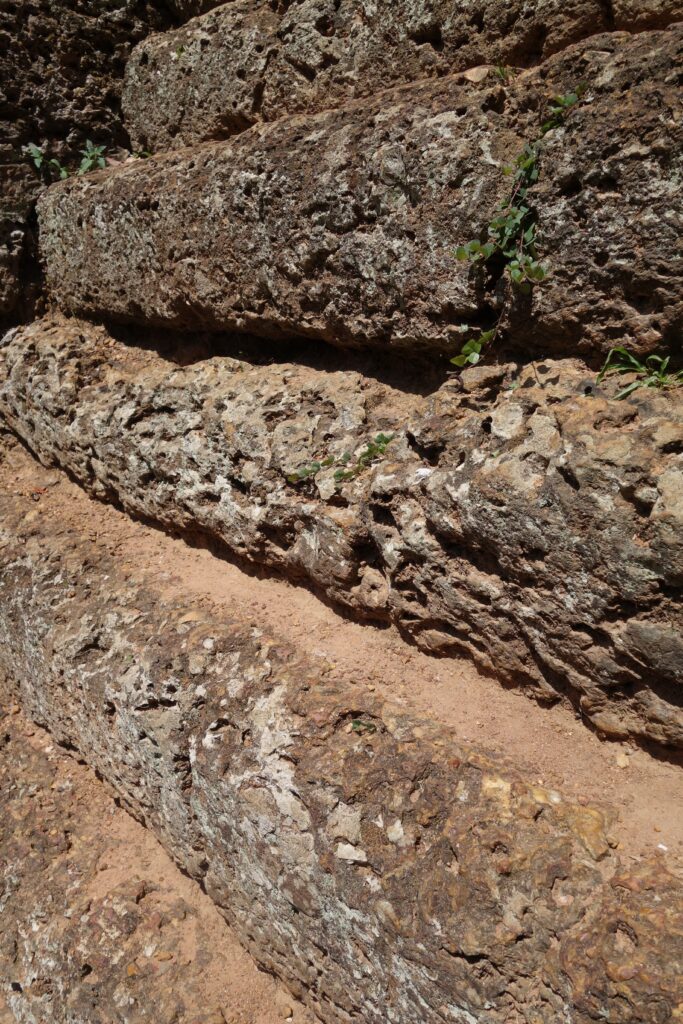
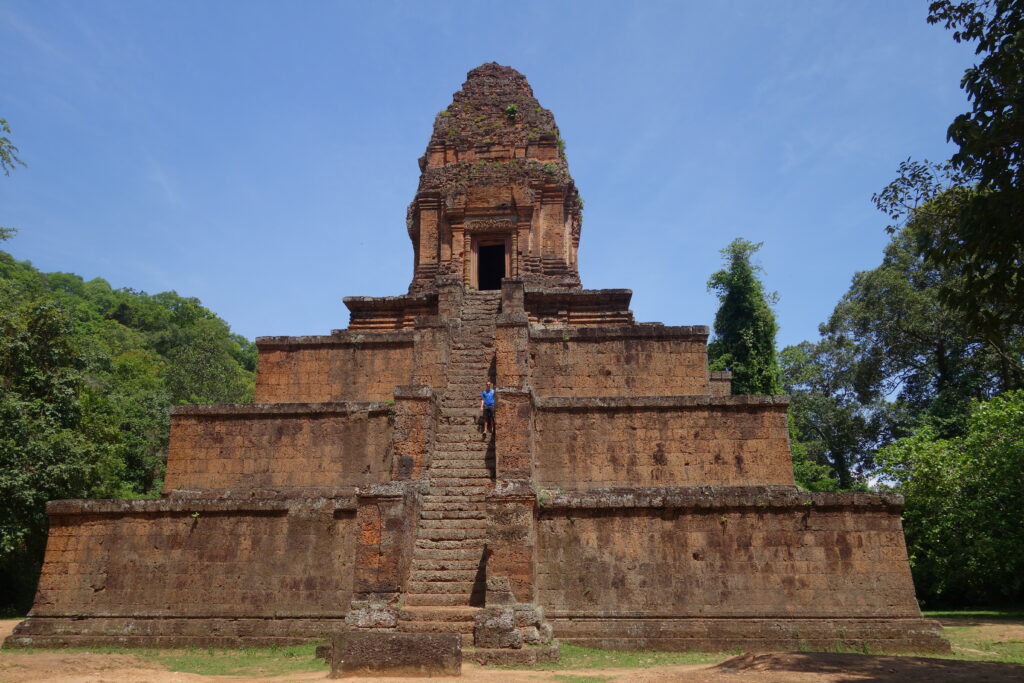
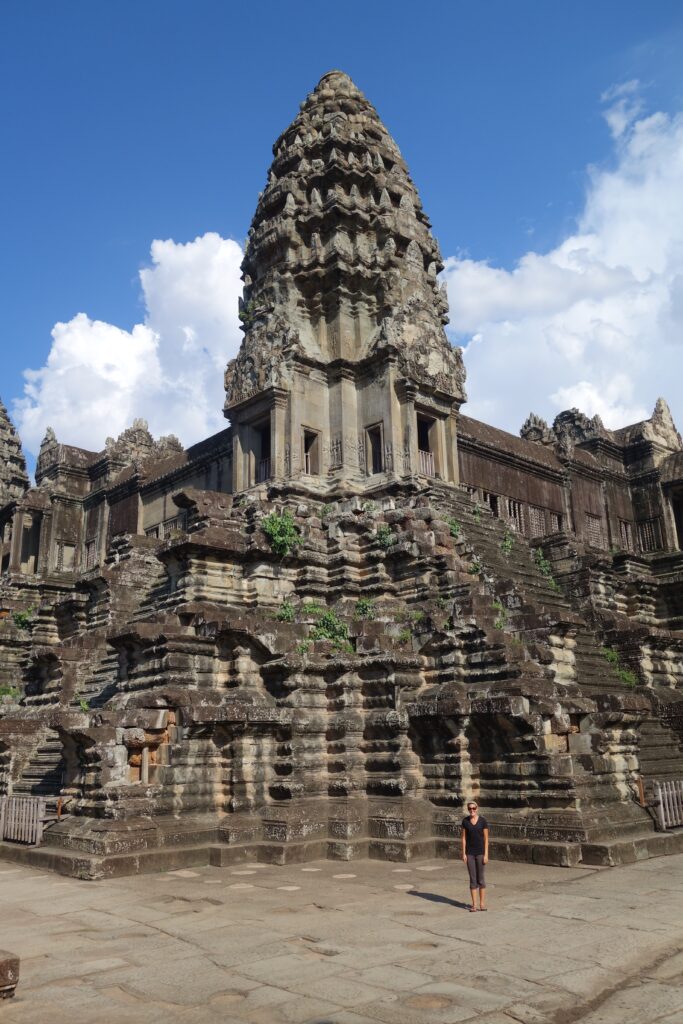
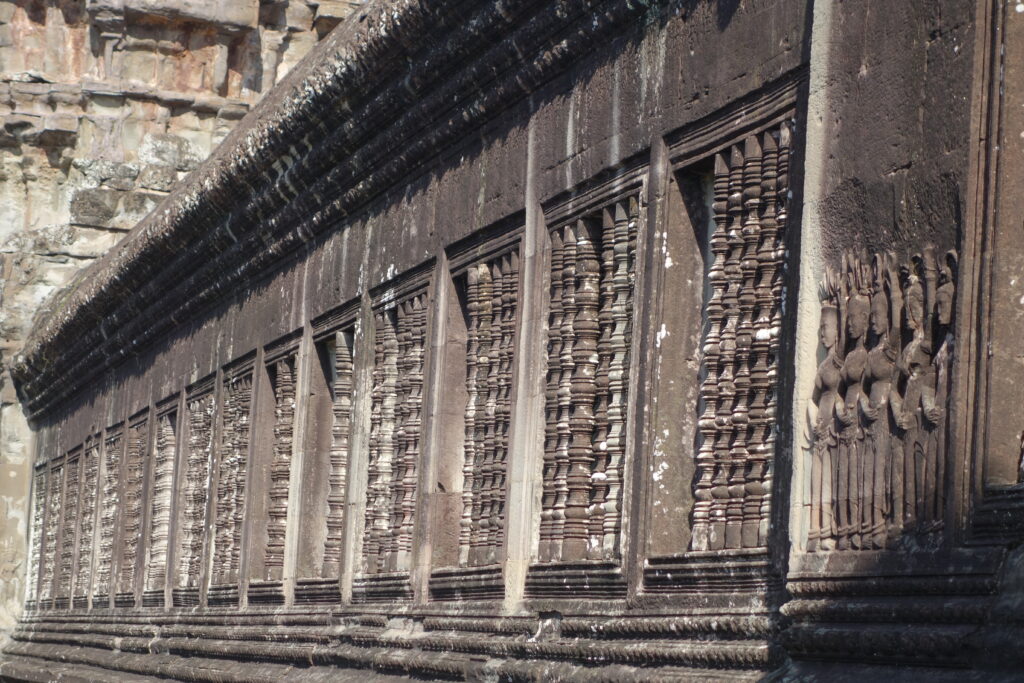


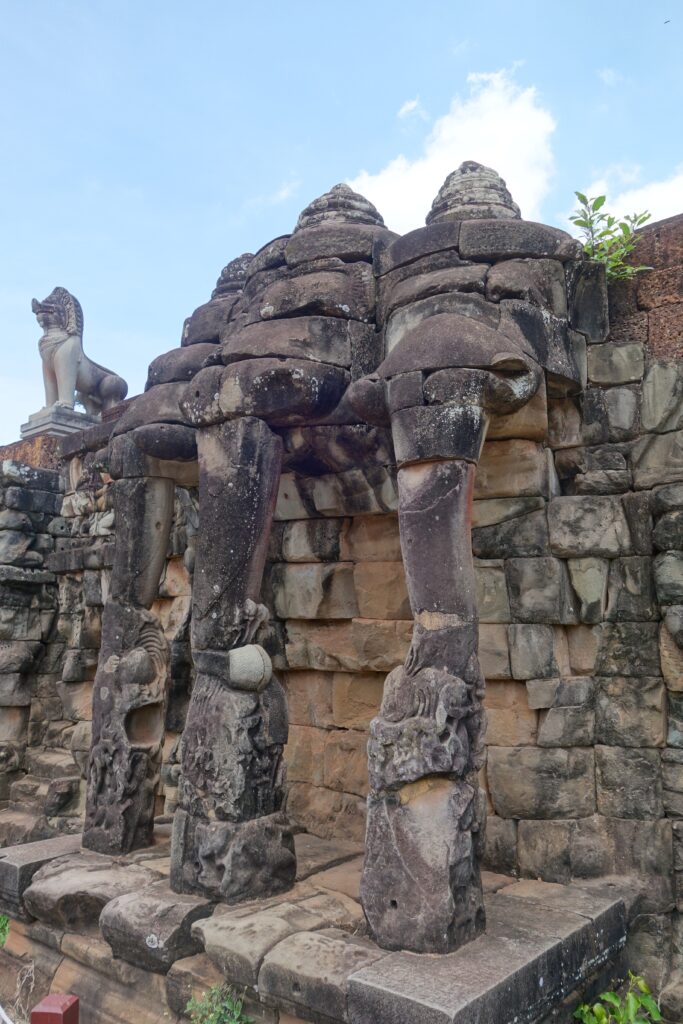
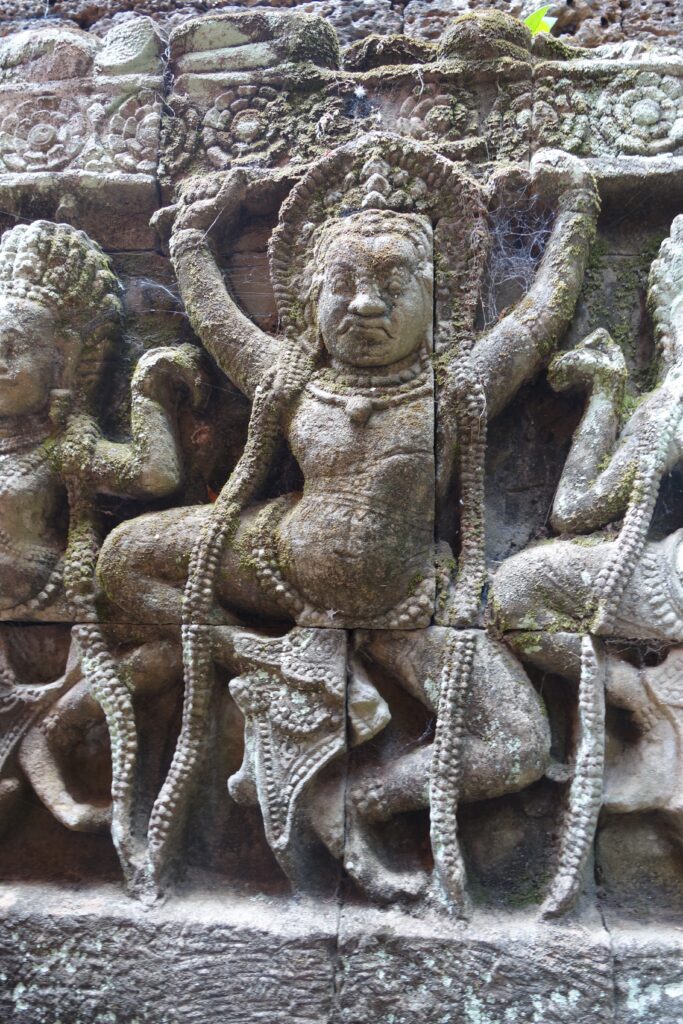
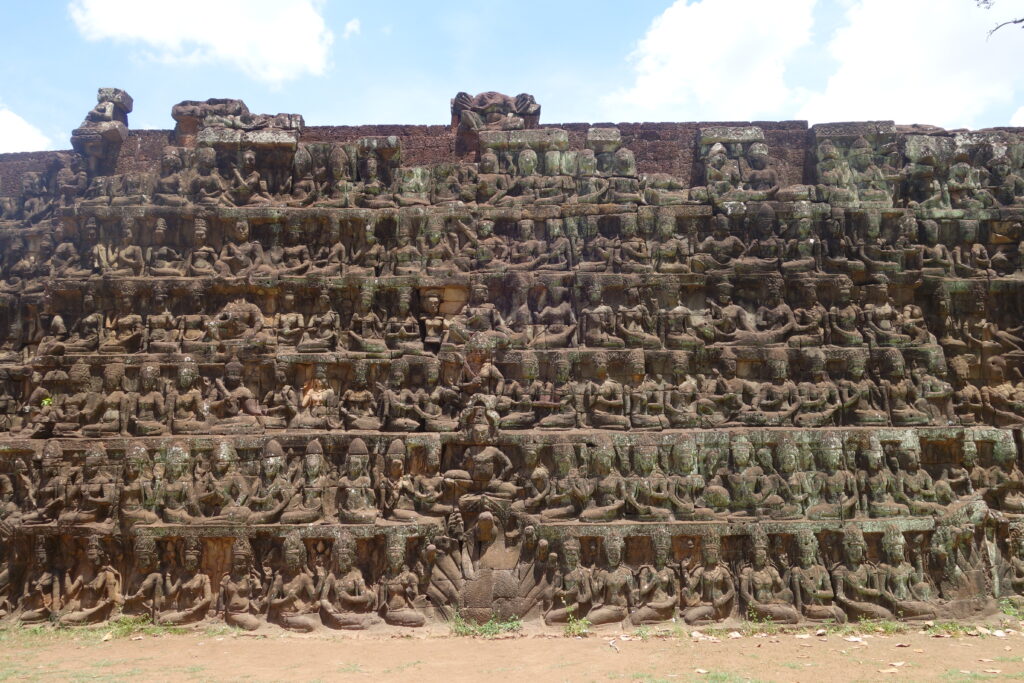
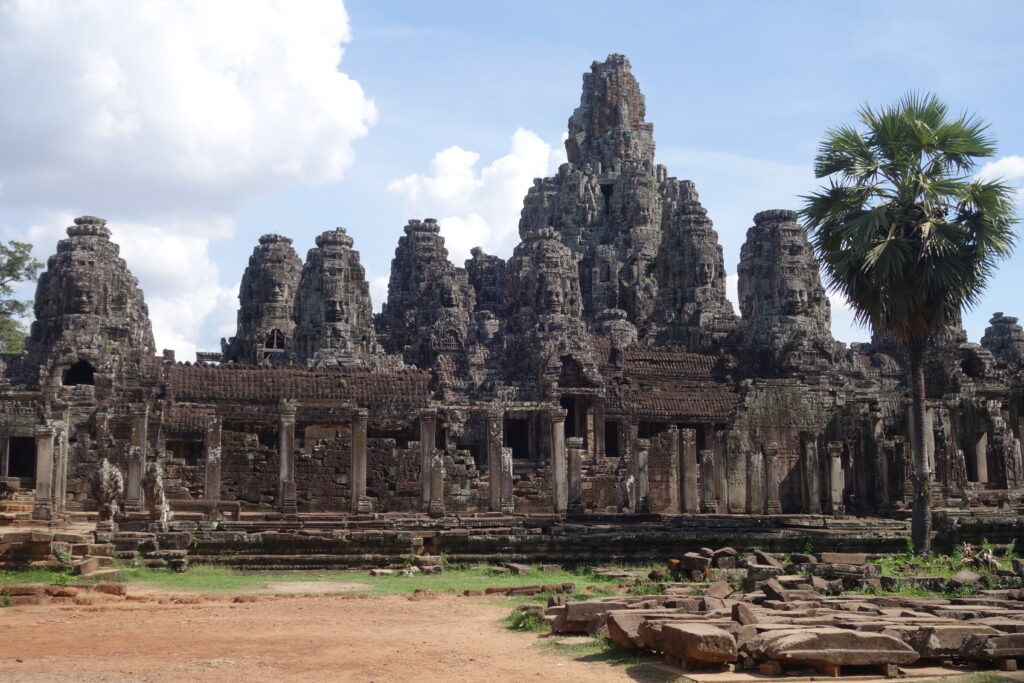
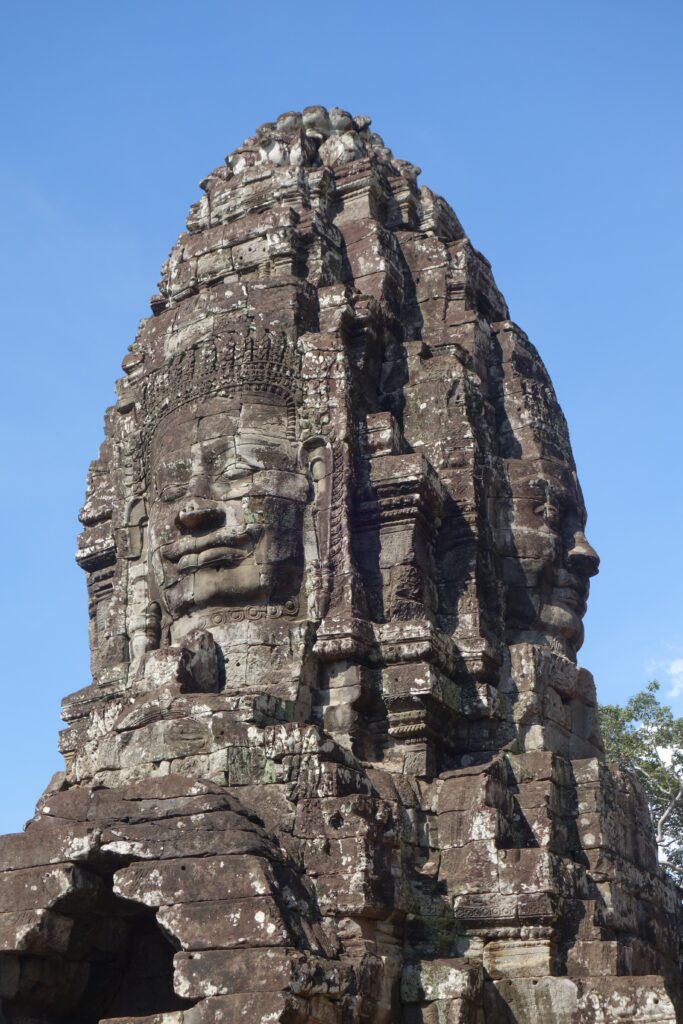
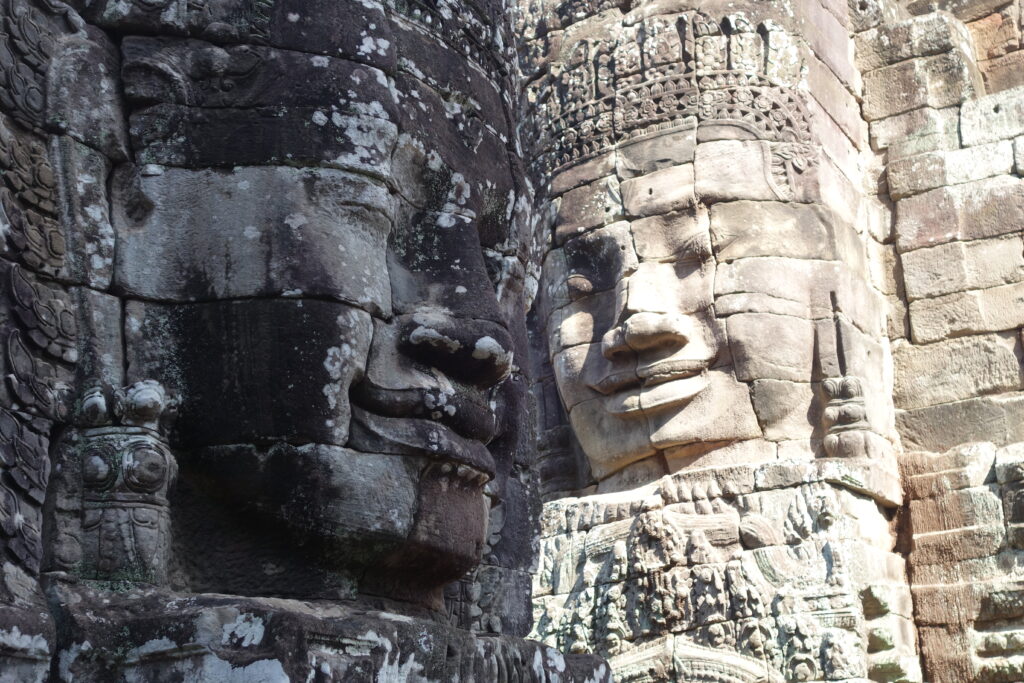

The funny thing is, even not being particularly big history buffs we felt like there was so much more to see even after spending a week visiting the site. Angkor Archaeological Park is interesting and unique and has so many little details to take in. I can’t say that I would have the stamina to visit the temples for 7 full days in a row, but if I went back on another vacation in the future, I would find plenty of new and interesting things to admire.



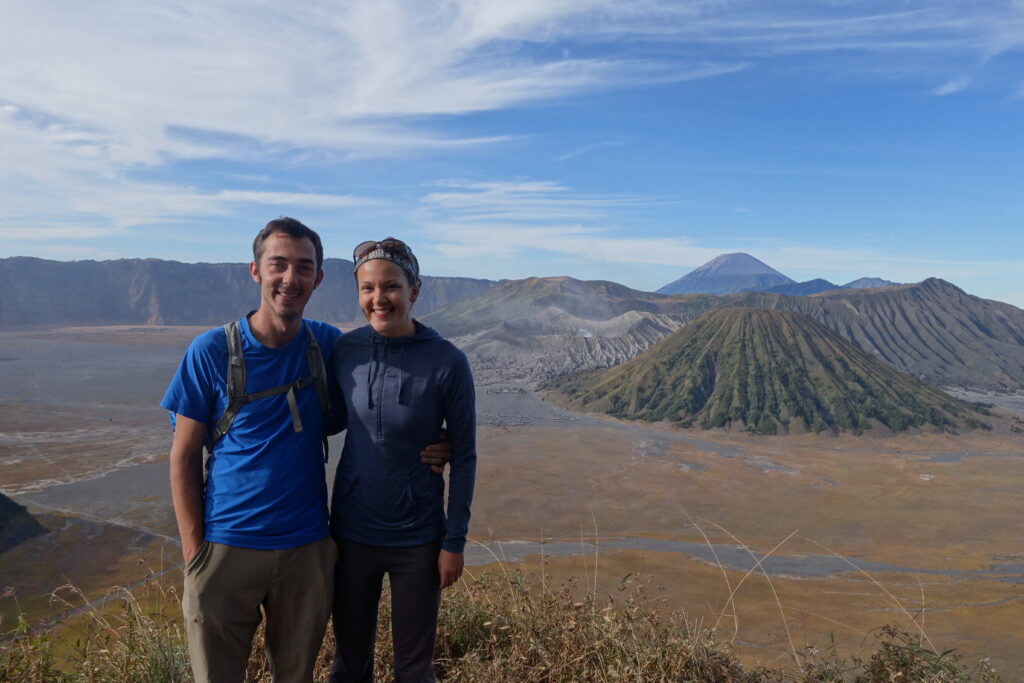
Amy:
Interesting blog, love the photos.
Did you and Jon take the shot of the naga bridge (1st photo under “Common themes…”) or find it on the Internet? See the face in the clouds in the lower left-side of the sky? It almost looks photoshopped that’s why I’m wondering.
It’s hard to imagine the scale of this site. Another ancient civilization faded in the annals of history.
Thanks! All of the photos are ones we took. I hadn’t noticed the face in the clouds but now that I see it it’s pretty clear! The scale was definitely what we were most surprised by and it was difficult to imagine such a huge and strong civilization existing there and then going into decline and deserting the area.
Dang that’s huge! I visited Tikal in March and could have spent many days exploring…. can’t imagine the amount of stuff to see there! It’s amazing to see how well the carvings were preserved compared to the stairs. In Tikal the stairs were (mostly) fine, but there were almost no carvings to see.
Love the blog posts! 🙂 Miss you guys, glad you’re having an amazing time!
Yeah, it is interesting, some of the carvings seem to have been shielded from the weather pretty well, while others have been replaced by facsimiles of the original. So some of the carvings in the photos are not actually that old.
And as for the stairs… I think the massive number of tourists walking around has eroded the stone really badly. It’s actually a known problem but the Cambodian government hasn’t really addressed it yet. What they really need to do is limit the areas of a temple that can be visited and install a wooden walkway above the stone. (They have done this in a few places already.)